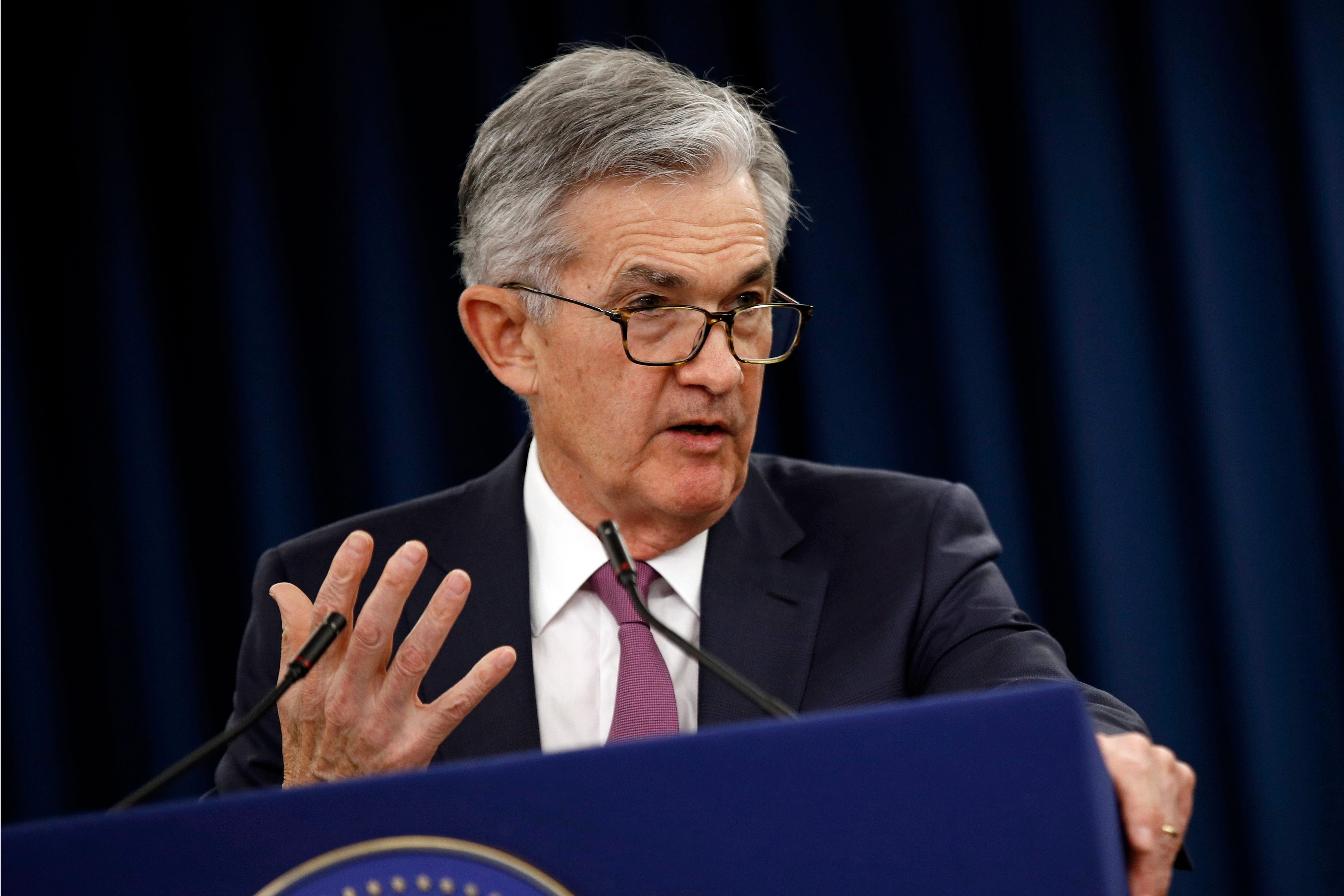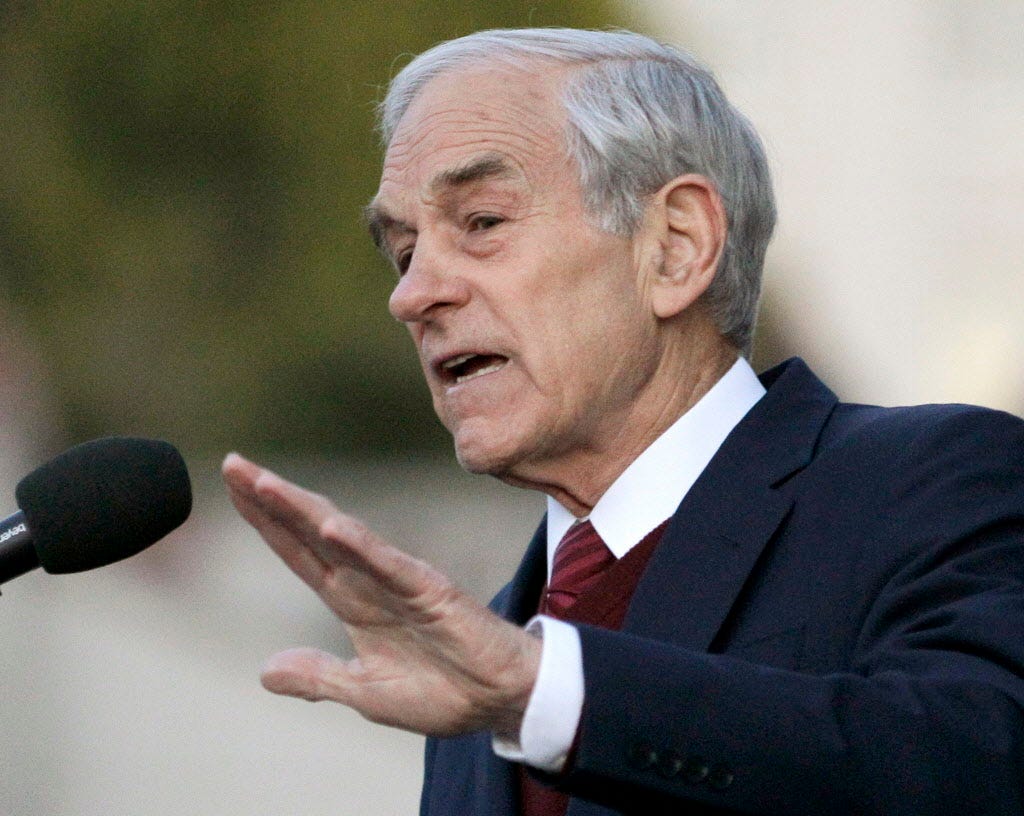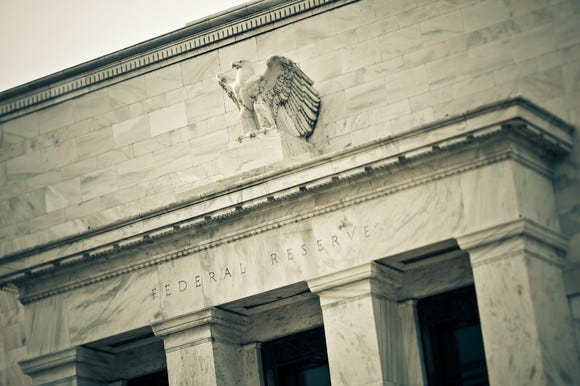Does The Federal Reserve Print Money Out Of Thin Air
This is where the money is coming from to rescue the US economy
Where does the U.S. stimulus money come from? Here's how the Federal Reserve is saving the economy from the COVID-19 crisis.
Just the FAQs, USA TODAY
In its frantic scramble to save the American economy, the central bank of the United States seems to have the ultimate superpower.
It works like magic. With a few strokes on a computer, the Federal Reserve can create dollars out of nothing, virtually "printing" money and injecting it into the commercial banking system, much like an electronic deposit.By the end of the year, the Fed is projected to have purchased $3.5 trillion in government securities with these newly created dollars, one of many tools it is using to help prop up the ailing economy during the COVID-19 pandemic, according to Oxford Economics.
"The way you and I have checking accounts in our banks, that's how all these other banks have accounts at the Fed," said Pavlina Tcherneva, an economist at Bard College in New York. "All the Fed does is literally credit them. They just type it in."
The Fed's goal: to keep markets functioning after they had seized up in fear. The strategy also makes credit easier to obtain, with a bigger money supply and lower interest rates. Without these and the Fed's other emergency measures, the economy would have crashed already, experts say. Fed Chair Jerome Powell said at a recent news conference that these purchases have helped market conditions improve "substantially" in recent weeks.

Fight for survival: Inside historic black bookstores' battle to hang on against the COVID-19 pandemic
Economy vs. stocks: Here's why the market is better than the economy right now
But an unstated, practical result of the Fed's bond purchases is that it creates money to finance the gigantic debt run up by Congress. The very idea of it tends to explode the heads of those who say dollars should come from work, savings and investment instead of thin air. In the age of a nearly $25 trillion national debt, such "sound money" concepts seem outdated – relics of a bygone era in which the value of a dollar once was based on a fixed amount of gold.
"What we're working with now is fake money, a fake measuring rod," longtime Federal Reserve critic and former Republican presidential candidate Ron Paul told USA TODAY. "It is unbelievable."

In this case, the federal government's bank isn't just creating massive amounts of dollars from scratch. The government also is, in effect, using those newly created dollars to pay down its own debt, this time at an unprecedented scale because of the economy's massive shutdown triggered by the pandemic.
This might sound like a financial fantasy: You mean we can pay our credit card bills by simply pressing a button?
Yes, the government can, unlike people and businesses, though it's a little more complicated than that. The larger question is whether it's sound and sustainable.
The answer depends on whom you ask and how it's managed.
How the Fed injects money into the economy
The Federal Reserve doesn't literally print paper dollars. That's the job of the U.S. Treasury, which also collects taxes and issues debt at the direction of Congress. At this time of crisis, the Fed instead makes large asset purchases on the open market by adding newly created electronic dollars to the reserves of banks such as Wells Fargo, Goldman Sachs and Morgan Stanley.
In exchange, the Fed receives large amounts of bonds – U.S. Treasury securities and agency securities that are backed by bundles of home mortgages.
As a result, markets that had stopped working smoothly started to flow again. Banks get more dollars in reserve and are more prone to lend money without worrying about exhausting their funds because of a run on the bank in a time of panic. Such big purchases of securities by the Fed also effectively increase the money supply and drive down interest rates. This keeps borrowing costs cheap for those who need it.
If the Fed didn't take these and other emergency measures, "the system already would have blown up," said Tim Duy, an economist at the University of Oregon who previously worked in the U.S. Treasury. "The markets would have crashed 10 times over."
Separately, Congress recently has passed massive spending bills that have swollen the national debt by about $2.4 trillion to help businesses and taxpayers. Much of that money comes from issuing U.S. Treasury securities – government debt that is bought by investors who earn interest on it.
Such foreign and domestic investors owned most U.S. public debt as of last year, with the Fed only owning 14% of it, according to the Government Accountability Office.
Now the Fed has even more. Since mid-March, the Fed has bought $1.4 trillion in Treasuries – the bulk of the $1.6 trillion in total Treasuries issued during that period – to thaw out markets that had frozen because of the current crisis, according to Oxford Economics. The Fed, however, doesn't buy securities directly from the U.S. Treasury. Instead, it purchasespreviously issued Treasury securities through commercial banks.

In effect, one agency of the government – the Fed – is creating dollars to buy government debt in the form of securities previously issued by the U.S. Treasury. The Treasury then pays the Fed what it owes in interest on those securities. In turn, the Fed is required by law to return to the Treasury the profit it makes from the Treasury off of these securities.
"It's just kind of a circle in that respect," Duy said.
The same circle also plays a role in the Fed's unprecedented crisis plan to lend more than $2 trillion to businesses, and state and local governments. In this case, the Fed also would be creating the money for loans, said former Federal Reserve vice chairman Alan Blinder, now an economics professor at Princeton.
Fed Chair Powell said he expects the loans to be repaid. But what if some aren't? Does it matter? After all, the Fed can just push a button to create money.
Blinder said it does matter because the Fed is required to remit to the Treasury the profits it makes on its balance sheet, which has ballooned by $2.2 trillion to a record $6.7 trillion since mid-March.
"If the Fed would take losses on some of its loans, it would pay less to the Treasury," Blinder said. "The budget deficit would be higher, so it would be as if the Treasury spent more money or taxed less."
This is why Congress, through the CARES Act relief and stimulus measure, also has provided $454 billion for Fed programs in case some loans fail, giving the central bank some political cover in case they do.
Does 'creating' money create an inflation risk?
Paul, the former Texas congressman and author of "End the Fed," predicts such money creation will lead to disaster. He says it will cause overheated financial bubbles fueled by too much easy money in the system – a bubble that could burst with painful fallout. Creating too much money that chases too few goods also leads to price inflation, decreasing the purchasing power of the dollar.
But high inflation didn't materialize the last time the Fed created money on a similar scale as part of its efforts to revive the economy during and after the Great Recession. To the contrary, an arguably bigger concern – then and now – has been persistently low inflation, which eventually could lead to deflation, or falling prices, that prompt consumers to put off spending and hurt the economy.
"With the economy so down, and inflation so low, the fears that these kinds of operations will lead to high inflation in the United States seem very farfetched," Blinder said.
The cause of the current crisis is a pandemic that forced businesses to shut down for weeks, leading both the Fed and Congress to take extraordinary measures. Congress is approving huge amounts of spending on stimulus and relief while the Fed is creating huge amounts of dollars that end up paying for that debt.
This isn't new, Tcherneva said.
"It's just that now the expenditure is so extraordinary, and because we need to pass a huge budget overnight that we are suddenly realizing we didn't tax anyone to get this money, and we didn't borrow it from anyone," said Tcherneva, author of the upcoming book, "The Case for a Job Guarantee." "The government self-finances."
Tcherneva is on the opposite side of the spectrum from Paul. She is a proponent of "Modern Monetary Theory," which argues that the government can always pay its bills by creating more money, minimizing the importance of deficits and debt.
Not every country can do this – only those that issue their own currency. And no other country can borrow quite like the United States, whose Treasury securities are in demand worldwide, largely because they are backed by the "full faith and credit" of the U.S. government, a global superpower with a powerful military. But there are limits.
`Is there a limit?'
The Fed's mandate from Congress is to maximize employment and stabilize prices. In doing so, it effectively steps on the gas during times like this and hits the brakes when the economy appears to overheat and prices rise too fast.
Just as it can increase the money supply by creating money, the Fed can also reduce it by making moves that increase interest rates, such as selling some of the securities on its balance sheet, effectively taking money out of the system.
Going too far in either direction at the wrong time can hurt the economy. In this economic emergency, the Fed has signaled it will do what it takes.
The Fed's "lending facilities are constrained by approval of Treasury, and ultimately Congress holds authority over the Fed," said Duy, who publishes a blog on the Fed called "Fed Watch."
"But in theory, the Fed can just keep buying assets," such as Treasury and mortgage-backed securities.
At the same time, Congress's spending still creates debt from the Treasury that has to be paid back. The Congressional Budget Office recently projected the budget deficit will more than triple to $3.7 trillion in the current fiscal year, with federal debt held by the public at 101% of gross domestic product. How much debt is too much?
Powell told reporters that the U.S. has not been on a "sustainable" fiscal path for some time, noting the nation's debt is growing faster than the economy. He added that those concerns now must take a backseat to getting out of this crisis.
Tcherneva downplayed debt concerns in the long term, noting that Japan is still able to service its debt despite having a debt-to-GDP ratio more than double that of the U.S. in recent years. Japan also issues its own currency.
"We actually don't know how much (debt) is too much," Tcherneva said. "Is there a limit? If the interest on the debt exceeds the growth of the economy, that could be a problem."
She said the Fed has tools that can help keep long-term interest rates below the economy's growth rate, though others would say those rates are mostly controlled by the market.
And, of course, there's the Fed's magic printing machine.
"The United States can pay any debt it has because we can always print money to do that," former Federal Reserve chairman Alan Greenspan said on NBC in 2011. "So there is zero probability of default."
E-mail reporter Brent Schrotenboer at bschrotenb@usatoday.com. Follow him @Schrotenboer
Does The Federal Reserve Print Money Out Of Thin Air
Source: https://www.usatoday.com/in-depth/money/2020/05/12/coronavirushow-u-s-printing-dollars-save-economy-during-crisis-fed/3038117001/
Posted by: martineznevard.blogspot.com


0 Response to "Does The Federal Reserve Print Money Out Of Thin Air"
Post a Comment